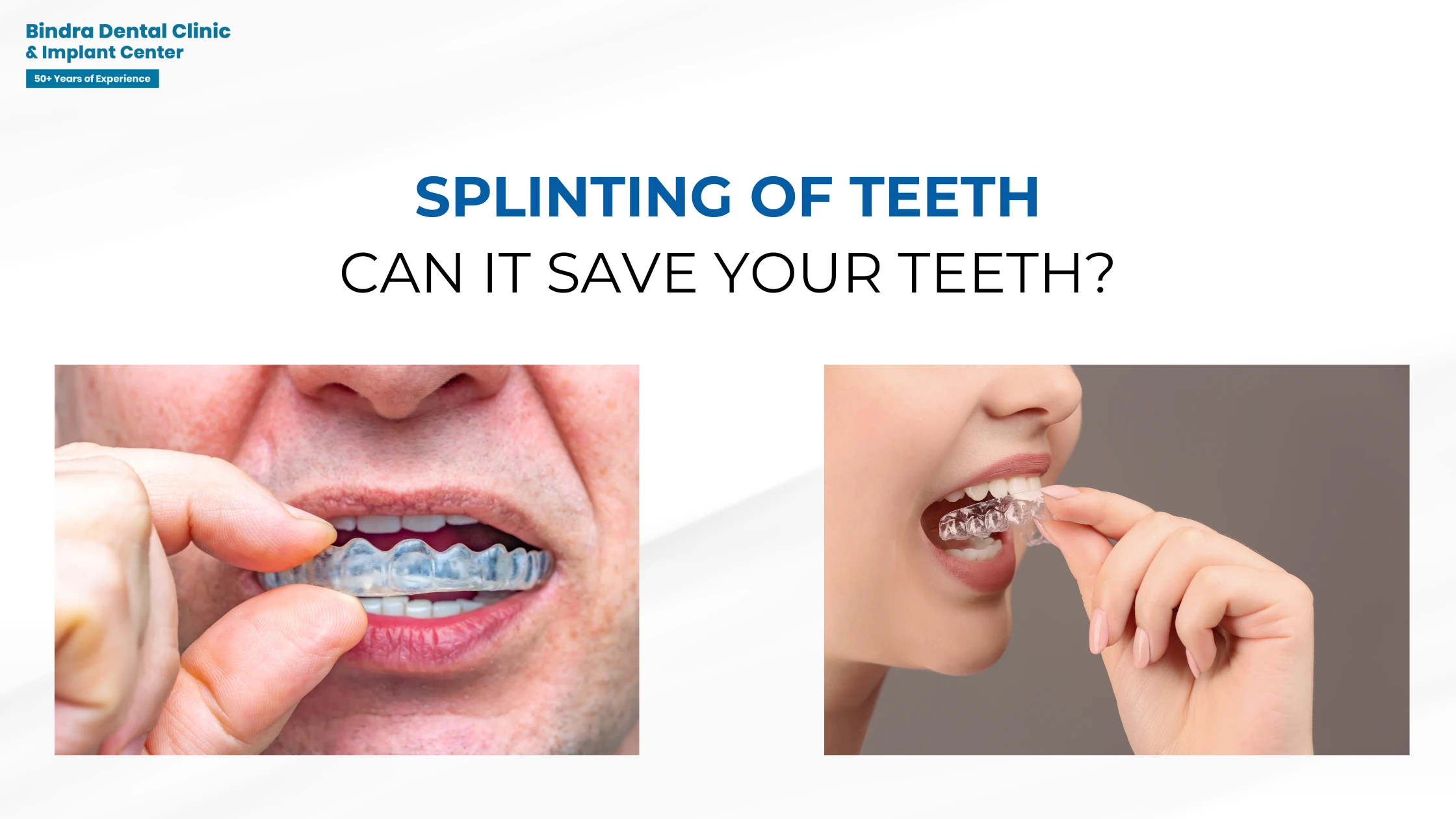Summary
Mobile teeth are a seriously distressing condition for the health and longevity of one’s natural teeth. Whether due to trauma, periodontitis, or occlusal disharmony-the indeed imbalanced teeth-can diagnose with therapies. Dental splinting of teeth is one of the more stabilizing techniques for such teeth by binding the loose teeth together to improve function and comfort.
But will splinting really save your teeth? This article aims to elucidate the science behind dental splinting, along with procedures, indications, benefits, and constraints, to assist you in understanding if this could be the feature to saving your natural smile.
Introduction
Our natural teeth are firmly held in the jawbones by a complex system of periodontal ligaments, bone, and gum tissue. However, these teeth can lose their ability to resist various conditions as they age. Acceptable tooth mobility may take place in common cases of periodontal or gum disease, trauma, bruxism-clenching, or grinding, or other minor changes after orthodontics. Once the teeth become mobile, patients sometimes suffer from pain, decreased efficiency in mastication, and uneasy esthetics. Hi, i am Dr Jasmeet Bindra, thorugh this article i will educated you about Splinting of teeth and how cthsi procedures save your teeth.
In the event of the application of dental splinting, it is a conservative treatment option for mobile teeth that will join the teeth with a splint-it could be fiber reinforced or metal wire bonded with dental resin. By spreading the biting forces through several teeth, the splint relieves stress on one single tooth, helps healing, and in many cases, prevents the tooth from being lost.
In this article, we discuss how splinting is done, who needs splinting, splint types, advantages, disadvantages, and whether it is a long-term solution.
What is Splinting of Teeth?
Dental splinting encompasses any method of joining two or more teeth to oppose mobility and lend support. The idea is to create an unstable unit by having the group of teeth act as one single functional unit. Splinting could either be temporary or permanent-going depending upon the cause and severity of mobility.
Types of Splints:
- Temporary Splints:These are usually employed in cases of dental trauma or acute mobility for a period of several weeks to several months.
- Permanent (Fixed) Splints: These are typically bonded for the long term, employing composite resin and fiber materials.
- Removable Splints: They look like retainers and may be worn at night in conditions such as bruxism.
Indications for Tooth Splinting
Splinting is recommended in several clinical scenarios:
- Periodontal disease: Loss of supporting bone due to gum disease calls for splinting of the teeth until a state of periodontal health is ideally restored.
- Traumatic injuries: Sometimes after a sport injury or accident, splinting is used to stabilize displaced or avulsed teeth for the process of healing.
- Orthodontic relapse: The teeth can still shift after braces are removed. Splinting will aid in the alignment and retention of the teeth.
- Bruxism and occlusal trauma: Splints can relieve excessive biting forces contributing to tooth loosening.
How the Splinting Procedure Works
The splinting process is straightforward and non-invasive:
- Assessment: The dentist assesses the degree of mobility, its cause, and the status of periodontal health around it.
- Cleaning and preparation: A thorough cleaning of the teeth, accompanied by some tooth etching or roughening of the tooth surface, is effectuer.
- Application: Next, either a fiber-reinforced composite or metal wire is bonded lingually across the teeth.
- Polishing and adjustment: Next is polishing the splint and checking the bite for comfort.
The entire procedure is usually completed within an hour and will not require anesthesia unless it is carried out after
Benefits of Tooth Splinting
- Preservation of natural teeth: Splinting can prevent extractions by giving loose teeth the support they need to stabilize.
- Improved function: It enables better chewing and speech function.
- Comfort and aesthetics: Reduces discomfort from wobbly teeth and improves smile confidence.
- Minimally invasive: Unlike surgical options, splinting is conservative and reversible.
- Cost-effective: Compared to implants or prostheses, splinting is more affordable.
Limitations and Considerations
While splinting offers many advantages, it’s not a one-size-fits-all solution. Important considerations include:
- Does not cure underlying disease: For example, in periodontal cases, splinting must be accompanied by periodontal therapy.
- Requires excellent oral hygiene: Splints can make cleaning more challenging, increasing the risk of plaque buildup.
- May fail under heavy forces: In patients with bruxism, splints can fracture or dislodge without additional protection (e.g., night guards).
- Potential for relapse: If the root cause isn’t addressed, mobility may return after splint removal.
Therefore, splinting should be part of a comprehensive treatment plan, not a standalone fix.
Case Example
According to the patient, the 45-year-old claimed mobility grade II of the lower incisors due to chronic periodontitis. After a thorough scaling and root planing, the teeth were stabilized by means of a fiber-reinforced splint. For the next six months, the patient maintained the best oral hygiene and did not have a further loss of bone on record. Aside from providing stability for the teeth, thereby enhancing function and comfort, the splint provided longevity to the natural teeth as well.
Wrapping Up
Thats all for today, now I am signing off, will see you all in next blog. So can the splinting of teeth can enhance your teeth life? Many times, yes, it really does help preserve natural teeth, with proper control as well. It creates a very fine line between tooth mobility and retention letting patients be restored to some extent for functional, aesthetic, and oral health fronts without extraction or prosthetic procedure.
Splinting is therefore not a cure-all. Splinting may work only if there is proper diagnosis of the condition, treatment of the underlying cause(s), and patient compliance with oral hygiene and maintenance.
If you think your teeth are loosened or if it is becoming more and more miserable to chew anymore, you could be due to see your dentist for testing and recommendations on whether splinting is for you. With timely intervention, splinting may just be the salvation of your teeth.


